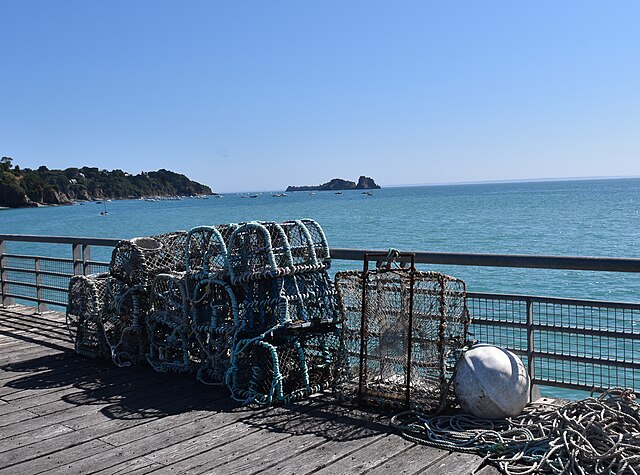The New England Fishery Management Council (NEFMC) has brought relief by delaying the enactment of rope-less lobster fishing regulations in Maine’s federal waters.
According to the council on September 25, 2025, the decision allows lobstermen to continue using their current roped traps or pots.
Local congressman Jared Golden had beforehand on September 23 persuaded the NEFMC to forgo its enactment proposal.
“Maine’s lobstermen are facing tremendous uncertainty,” he said in part, praising this most recent postponement on the industry’s behalf.
Golden added that many regulations are muddying the sector’s clarity for fishers and hence the need of requirement delays.
This latest requirement pause stems from a 2023 federal budgetary bill that offered a moratorium ending 2028 before effecting new lobster gear regulations.
At the passing of the bill, both the Senate and House of Representatives of Maine had supported the five-year procrastination period.
Now that the NEFMC has cemented the 2023 decision, lobstermen will have enough time to evaluate the suitability of rope-less gear.
According to the Maine Lobstering Union’s spokesman, Ginny Olsen, pop-up trap makers are currently only testing their devices in the higher lobstering industry.
Rope-less Fishing Plus
Rope-less lobster fishing gear or pop-up gear use neither chords nor floating location markers, unlike existing types.
They differ from traditional types because they are hands-free and have further GPS connectivity which identifies trap location remotely.
Their implementation in the United States is already bearing fruits, especially on the West Coast’s Dungeness crab fishery. Here, the trialling of pop-up gear has been ongoing since 2023 and has returned a 98% reliability rate.
Besides helping reduce right whale entanglements, this new gear has gained sustainability championing because its marine debris pollution rate is negligible.
In as recent as October 1, 2025, marine debris from old conventional lobster traps was chocking the Long Island Sound. According to the WSHU news radio, the feds have awarded a $1.8-million tender to fish out the traps. And as the following statistics point out, there are millions of currently active lobster pots on the Maine coast.
Maine Lobster Trap Statistics
Since the early 1800s, Mainers have been harvesting lobster commercially, many of which for domestic sale. By 2008, the market value of these critters on the East Coast state had hit $244 million, at a volume of 69.7 million pounds. Come 1997, the Maine government effected laws reducing harvests. It also regulated trap or pot numbers, which it capped at 800 per fisher.
But this hardly scrapes the surface, for the trap’s history in Maine goes back to 1809 when Ebenezer Thorndike of Massachusetts invented one. By the late 20th century, traps had lightened to below 80 pounds as makers abandoned heavy wood for metal.
In 2025, there were around 3 million traps of all sorts that connected to boats via ropes along the coastline of Maine. Most of these stay in shallow waters undersea between 20 and 30 feet deep. The top has a funnel design with netting through which lobster enter. They also have release hatches for any lobster measuring below the legal 3 1/4 inches or above 5 inches long.
Boats from which lobstermen retrieve the traps are usually 16 to 26 feet in keel length, for the shortest class. The medium length class are 26 to 40 feet long while the longest over 40 feet, according to ever-changing governmental regulations.
